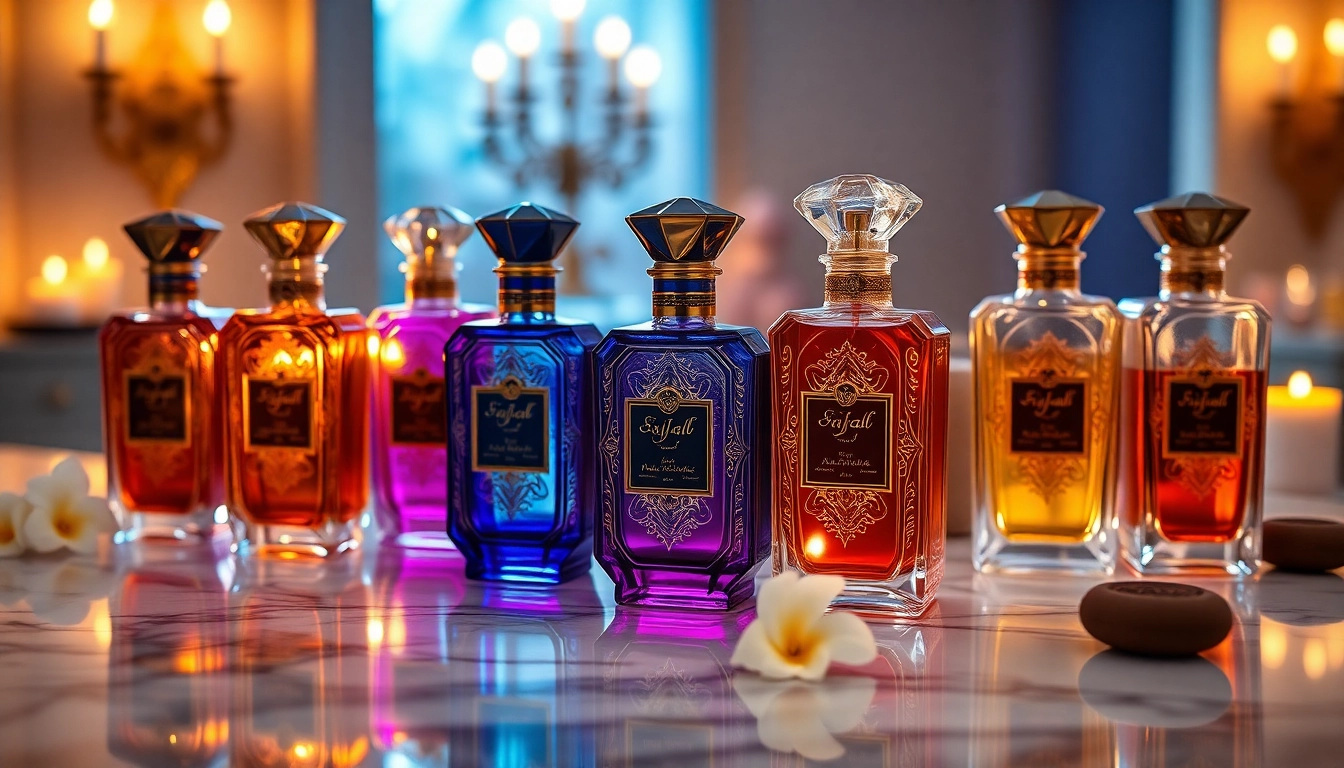Understanding the Essence of Arabian Perfume
Arabian perfumes have long fascinated olfactory aficionados around the world, resonating deeply with those who appreciate exotic scents. Known for their rich and complex fragrance profiles, these perfumes are an exquisite blend of traditional ingredients and modern ingenuity. To truly appreciate the allure of Arabian perfume, one must delve into their history, cultural significance, and the unique components that define them.
The History of Arabian Fragrances
The roots of Arabian perfumery can be traced back thousands of years, originating in ancient civilizations of the Middle East. This tradition was intertwined with early medicine and spirituality, where aromatics were used in religious rites, beauty regimens, and as remedies for ailments. The ancient Egyptians, for instance, were renowned for their use of essential oils during mummification, rituals, and in daily life.
As trade routes developed, the art of perfumery spread from Arabia to Europe and beyond, influenced by different cultures and ingredients. The introduction of floral extracts, particularly from flowers like jasmine and rose, revolutionized the fragrance landscape and led to the creation of hybrid perfumes that melded various cultural scents.
Cultural Significance and Traditions
In Arabian culture, the act of wearing perfume is not merely a beautification ritual but a deeply ingrained social custom that reflects personal status and hospitality. Perfumes symbolize purity and tradition, making them important in cultural ceremonies, weddings, and other significant life events. The way one applies and shares fragrance can express personality and intentions—sharing a scent can be an act of friendship and goodwill.
Moreover, the concept of scent is woven into the very fabric of Arab identity, with many families passing down secret perfume recipes across generations. The fragrance industry continues to grow within the Arabian Peninsula, maintaining traditional craftsmanship while embracing modern techniques and innovations.
Key Ingredients in Arabian Perfumes
The complexity of Arabian perfumes lies in their rich array of ingredients, many of which are native to the region. Key components include:
- Oud: A cornerstone ingredient in myriad Arabian fragrances, oud is a resin derived from Aquilaria trees, known for its deep, woody scent.
- Amber: This calorific component is favored for its warmth and sweetness, often used to enhance the longevity of perfumes.
- Jasmine: Common in both Eastern and Western perfumery, jasmine adds a floral touch that balances heavier scents.
- Rose: Another beloved flower, rose brings a fresh and romantic element to many formulations.
- Musk: Sourced from animal secretions initially, modern musk is often synthetically produced, providing intriguing depth and allure.
These components not only produce captivating scents but also evoke emotions and memories, reinforcing the deep connection between fragrance and culture.
Popular Types of Arabian Perfumes
Essential Oils vs. Alcohol-Based Perfumes
Arabian perfumes can broadly be categorized into two main types: essential oils and alcohol-based formulations. Essential oils, often presented in concentrated form, are a staple in Arabian perfumery. They are made from purely natural ingredients and retain the authentic scent of the materials used.
On the other hand, alcohol-based perfumes are typically lighter and can often be found in Western markets. These perfumes, while offering a broader range of dilution and scent profiles, might not provide the same lasting power or richness that many traditional essential oil fragrances do. Understanding these two types will help consumers make informed choices based on personal preferences and intended use.
Top-Selling Arabian Perfume Brands
Some of the most renowned Arabian perfume brands, celebrated for their craftsmanship and artistry, include:
- Lattafa: Known for a diverse range of affordable yet luxurious scents, offering something for everyone.
- Swiss Arabian: A pioneer in combining Western and Eastern aromatic elements, producing captivating, high-quality fragrances.
- Al Haramain: Esteemed for their traditional formulations, providing a luxurious touch to many classic scents.
- Arabian Oud: One of the leading brands specializing in oud-based fragrances, known for their authenticity and wide global reach.
- Rasasi: Blending tradition with innovation, Rasasi offers unique perfumes that reflect contemporary tastes while respecting cultural roots.
Unique Fragrance Profiles Explored
The fascinating aspect of Arabian perfumes is their varied fragrance profiles. Many perfumes incorporate both sweet and spicy notes—a hallmark of Arabian fragrance design—which creates a complex olfactory experience. For instance, a typical Arabian fragrance might blend the sweetness of rose with the warmth of amber and a hint of spiciness from saffron. Other popular profiles include:
- Woody: Characterized by rich oud and cedarwood, often evoking earthy and robust scents.
- Floral: Featuring a variety of flowers, often layered with spices to add depth.
- Fruity: Incorporating fruits like citrus or berries, often used for lighter applications.
- Spicy: Including notes of cardamom, cinnamon, and peppers, frequently creating bold and invigorating fragrances.
How to Choose the Right Arabian Perfume for You
Factors to Consider When Selecting a Scent
Choosing the right Arabian perfume can be an overwhelming experience given the multitude of options available. Here are a few factors to guide decision-making:
- Skin Type: Different perfumes react differently depending on skin chemistry; test a fragrance on your skin before making a purchase.
- Occasions: Consider the purpose of the fragrance—daytime scents may differ from evening or event-specific perfumes.
- Seasonality: Some scents are better suited for warmer or cooler climates; lighter citrus scents may be refreshing in warm seasons, while deeper, warmer notes can be comforting in winter.
Tips for Layering Arabian Fragrances
Layering fragrances is a sophisticated art that can enhance the longevity and depth of your scent. Here’s how you can effectively layer Arabian perfumes:
- Start with a Base: Use unscented lotion or oil as a base to help the fragrance adhere better to your skin.
- Use Complementary Scents: Pair a heavier scent, such as oud, with lighter florals, ensuring they complement rather than overpower each other.
- Apply Strategically: Focus on pulse points (wrists, neck, behind the ears) for maximum impact, allowing the scent to diffuse through body heat.
Recommendations for Different Occasions
Choosing the right fragrance for various occasions can elevate one’s presence significantly. Here are brief recommendations:
- Daily Wear: Go for lighter, floral, or fruity fragrances, which can add a hint of freshness without being overwhelming.
- Formal Events: Opt for rich, deep scents with oud and amber notes, providing sophistication and elegance.
- Casual Outings: Consider spicy or woody profiles, balancing charm and approachability.
- Special Occasions: Select exclusive or unique blends that make a statement and ensure memorable impressions.
Caring for Your Arabian Perfumes
Proper Storage Techniques
To maintain the integrity of Arabian perfumes, proper storage is paramount. Consider these storage tips:
- Avoid Heat Exposure: Store perfumes in a cool, dark place away from direct sunlight and heat sources.
- Keep Bottles Sealed: Always keep the cap tightly secured to prevent oxidation and evaporation of the scent.
- Use Original Packaging: Utilize retail boxes to safeguard against light exposure and temperature fluctuations.
How to Make Your Fragrances Last Longer
Extending the longevity of your fragrance can enhance the overall experience. Here are practical tips:
- Moisturize: Apply an unscented lotion before the fragrance to hydrate and provide a base for the perfume.
- Spray Strategically: Apply perfume after showering when your skin is warm and slightly damp for better absorption.
- Layer Products: Use matching scented lotions or body washes to reinforce the fragrance.
Signs of Expiration and When to Replace
Like many products, perfumes have a lifespan. Keep an eye out for the following signs that may indicate it’s time for a replacement:
- Change in Color: If the color has significantly darkened, it might indicate oxidation.
- Altered Scent: If the fragrance smells different from when you first purchased it, it may no longer be viable.
- Separation of Ingredients: If components appear separated or floating within the liquid, consider disposing of the bottle.
The Future of Arabian Perfume Industry
Trends and Innovations in Fragrance Development
The Arabian perfume industry is ripe with innovation, driven by trends such as personalization, sustainability, and the fusion of traditional and modern scent-making techniques. Brands are beginning to leverage technology, utilizing AI and consumer data to create bespoke fragrant experiences tailored to individual preferences.
Additionally, as more consumers seek unique expressions of identity and craftsmanship, artisan perfumers are gaining recognition, focusing on small-batch productions that offer distinctive olfactory profiles.
The Role of Sustainability in Perfume Production
Sustainability has become a critical focus area for many brands, particularly in the wake of global climate concerns. Arabian perfume houses are increasingly seeking to source raw materials ethically, engage in responsible production practices, and utilize eco-friendly packaging. This shift towards sustainability not only resonates with eco-conscious consumers but also fosters a deeper responsibility towards preserving the traditional crafting methods of perfumery.
Expanding Global Market for Arabian Perfumes
The growing appreciation for Arabian perfumes among Western consumers presents an exciting opportunity for expansion. Market trends indicate a surge in the demand for exotic fragrances, with more individuals eager to explore and understand the depth and complexity of Arabian scents. This trend is bolstered by social media influencers and fragrance aficionados who highlight these luxurious products, helping to bridge cultural gaps and broaden the market.


